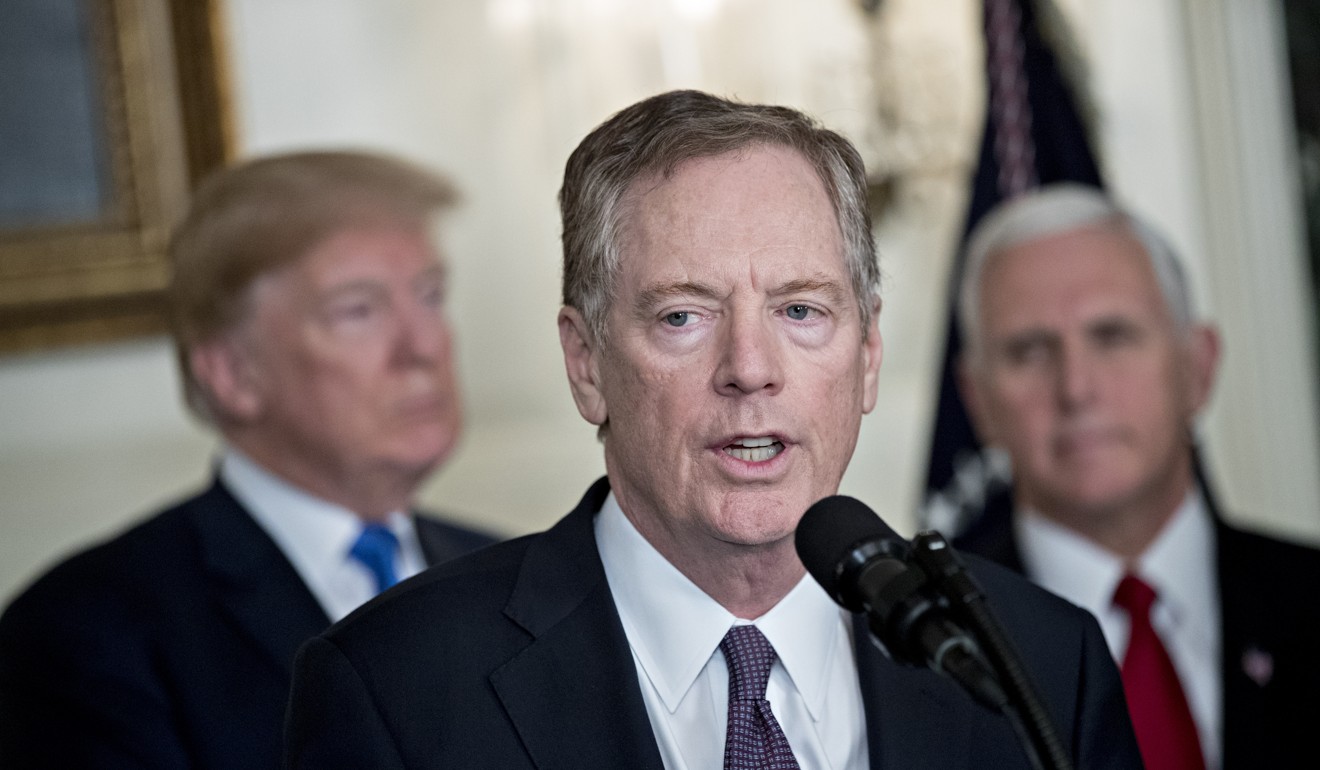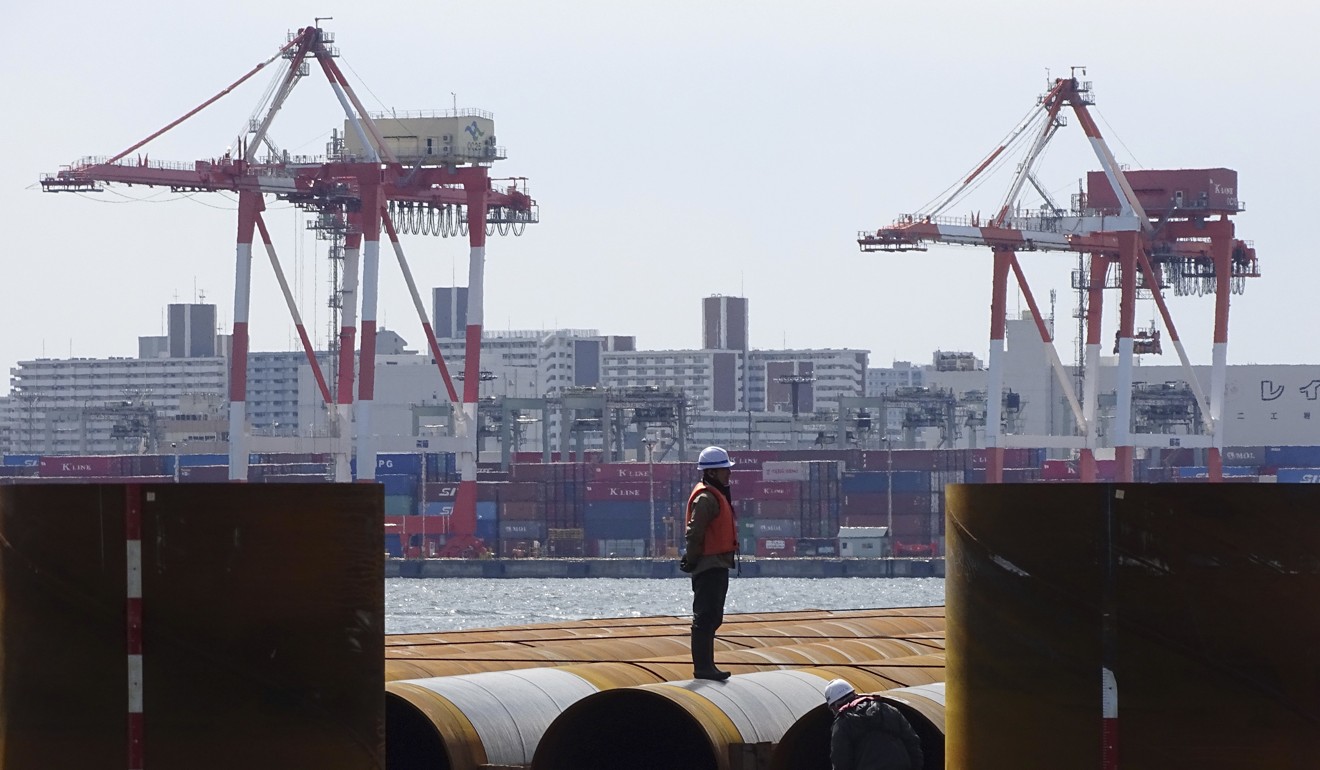
Why China’s US trade stand-off is not a replay of Japan’s in the 1980s
Washington is using some of the same trade tools against Beijing that it once used against Tokyo – but this time things are different
At first glance, China’s trade frictions with the US seem to be of a piece with the confrontations Japan faced in the 1980s: a surging Asian economy becomes a threat to American dominance in world trade and the US retaliates by crying foul and demanding concessions.
Last Monday People’s Daily ran a commentary by former Japanese prime minister Yasuo Fukuda comparing the trade war threat China is facing with what happened to Japan in the 1980s and cautioned China to “learn from the painful lesson of Japan”.
But there, analysts say, is where the similarities end. China is not Japan and Beijing is better positioned today than Tokyo was three decades ago to manage the threat of a trade war.
When they initiated trade action against China, US President Donald Trump’s trade policy team, led by US Trade Representative Robert Lighthizer, appeared to be relying on the approach Washington took in battles with Japan. (Lighthizer had been a deputy trade representative in the Reagan administration.)

Last August, the US began a Section 301 investigation under the Trade Act of 1974 – a tool it used frequently against Japan – of what it contends is China’s discriminatory industrial policy and intellectual property thefts.
While Trump continues to press China to narrow its trade surplus with the US, this round of 301 Section investigation has centred on Beijing’s industrial policy and hi-tech ambitions.
“The tension between Beijing and Washington reflects the confrontation of a market-driven model and state intervention in the economy, the contest of industrial competitiveness in the global production chains and even the fight for global economic governance rules,” a Chinese expert who advises the Ministry of Commerce said.
China’s “state capitalism”, observers note, has lifted it to the world’s second-largest economy. Increasingly, though, China’s business practices – especially its subsidising of state champions in technology and industrial sectors, and its limiting of market access to foreign companies and investors – have fuelled discontent among its trading partners.
Ever since the end of the second world war, Japan has been a close ally of the US, heavily reliant on it for security. Its political and economic systems are similar to those in the US, and it shares Washington’s goal of curtailing China’s growing influence in the Asia-Pacific region. Thus, when it found itself at odds with the US in past decades, it had to give great weight to its trading partner’s complaints.
“[Japan] has more reasons to go along with US demands and respond to the US pressure in the way that it did,” said Julian Evans-Pritchard, senior China economist in Singapore with Capital Economics, an economics research consultancy based in London.
China’s economic growth relied less on exports than Japan did, he noted. Thus, he said, China had less to lose in a trade war and it would be more difficult for the US to compel China, a tougher opponent, to shift its industrial policy.
“China has a very different political system. It is determined to go along with its own development model and believes in that model,” Evans-Pritchard said. “People should not expect China to abandon the model easily just because of US pressure on trade.”
Indeed, Beijing has not been shy in pushing back at the US, either in talking tough or in retaliating with new tariffs of its own. In its confrontations 30 years ago, Tokyo could not be so bold. Japan was in a far weaker position because of its economic reliance on exports generally and the US market particularly.
Arthur Kroeber, co-founder and research head with China-focused Gavekal Dragonomics, based in Hong Kong, said that deep underlying frictions with China would not quickly go away as long as the US was not completely clear about its objectives.
“The US playbook for this competition is still being written,” he said. “China is in a strong position and will not soon budge on the key issues that anger its trade partners.”
Japan saw its first trade surplus with the US in 1965 and surpassed the Soviet Union as the world’s second-largest economy in 1987. The trade frictions with the US began in the late 1950s and peaked in the late 1980s.
Its share in the overall US trade deficit reached 65 per cent in 1991. (According to US statistics, China accounted for nearly half of the US overall trade deficit in 2017.)
As Japan’s trade surplus with the US increased steadily during that period, the US and Japan had frictions across a wide range of sectors, including textiles, steel, cars, fibre and semiconductors.

To curb Japan’s exports, the US launched anti-dumping measures against Japanese products, especially in the steel and car industries, in the 1980s, instituting or threatening to enact high punitive tariffs and forcing Japan to impose export controls and expand its imports.
From 1976 to 1989, the US launched more than 20 investigations under Section 301 against Japanese manufacturing sectors such as steel, telecommunications, pharmaceuticals, semiconductors, satellites, supercomputers and wood products. It also forced Japan to make concessions like opening its domestic market, reducing exports to the US and improving domestic law and enforcement on issues like intellectual property protection and the treatment of foreign investment.
“Section 301 of the Trade Act of 1974 has become one of the most effective weapons that the US has in its negotiating arsenal to overcome the great reluctance of the Japanese to enter into trade agreements,” Jean Heilman Grier, then senior counsel with the US Department of Commerce, said in 1991.
As part of efforts to cut Japan’s massive trade surplus, the US forced an appreciation of the Japanese yen. In the Plaza Accord in September 1985, the US, Japan, France, West Germany and Britain agreed to jointly intervene in the foreign exchange markets to depreciate the US dollar against the yen as well as against the German mark. The yen strengthened 86 per cent against the US dollar by 1988 from 1985.
Japan also loosened monetary policy by lowering interest rates in an effort to stimulate domestic consumption to offset the strengthening yen, but the move turned out to fuel asset prices which led to a bubble economy and took decades to deflate.
With a similar trajectory in a developing economy, Chinese officials and academics have researched and debated for years what lessons to draw from Japan’s “lost decades”.

Xie Yaxuan, chief economist with China Merchants Securities in Shenzhen, said Japan underestimated the risks of an asset bubble and did not pay enough attention to broader policy responses to the changes in economic growth.
“At the stage of economic transformation, it is crucial to find a new driver for the economy and make it resilient enough to replace the old one. That is more than the reaches of exchange rate and economic policies,” Xie said. “China has done a good job”.
In economic scale, China today is much stronger than Japan was in the 1980s. It overtook Japan in 2010 to become the world’s second-largest economy and has continued to narrow the gap with the US.
“China’s central bank has aimed for a stable yuan. Coupled with China’s massive US Treasury holdings, China’s economy is now much more closely connected to the US economy than Japan’s economy was connected to the US back in the 1980s,” said Shen Jianguang, chief China economist with Mizuho.
He also referred to China’s big consumer market and a steadier yuan as other notable differences between China now and Japan then.
China’s exports contribute only one-fifth to its GDP; the advantages of cheap labour have faded away and the country has shifted its growth to domestic demand. Its exports to the US accounted for less than 20 per cent of China’s total exports in 2017, half that of Japan’s during its peak period.
China is also exploring new overseas markets through its “Belt and Road Initiative”, which is aimed to foster closer trade and economic ties throughout Asia and into Europe, with forays into Africa and Latin America as well.
“China is able to cultivate a domestic market for its 300 million middle-income class. It is much more capable than Japan of bolstering domestic consumption,” said Lu Xiang, a specialist on US issues with the Chinese Academy of Social Sciences.
Lu said the US was facing challenges to properly manage its power decline and coexist with a rising China.
“Further confrontation between Beijing and Washington may ... go on for a long time, no matter who is the leader of the US,” Lu said.
In all, before this new investigation by the Trump administration, the US had launched five Section 301 investigations against China: one into barriers to market access in 1991; three in intellectual property rights sector from 1991 to 1996; and, more recently, one into China’s clean energy policy in 2010. (China entered the World Trade Organisation in 2001.)
No sanctions were put in place, and agreements were reached to defuse the tensions. China revised its intellectual property rules, stepped up IP protection, removed the state subsidy for domestic green energy companies and further opened market access to the US.
This time the US has accused China of using unfair trade practices and industrial policies to hurt the US economy, such as forced technology transfer and discriminatory licensing of American firms in exchange for market access in China, government-facilitated technology acquisitions overseas and cyber intrusion of trade secrets.
After the US Trade Representative’s Office concluded its 301 investigation on March 22, Trump announced 25 per cent tariffs on US$50 billion of Chinese goods, including machinery, semiconductors and medical equipment on April 4.
Beijing retaliated within hours to impose the same level of import tariffs on 100-plus American products like cars and aircraft, which have deep market share in China, as well as soybeans, pork and other agricultural products, the sector regarded as Trump’s political base.
Unlike Japan, which built car and electronics factories in the US as one way to ease tension, Chinese investment may face a harder road to gain access to the US.
Citing national security concerns, the US Congress has been revising regulations to expand the scrutiny power of the Committee on Foreign Investment in the United States in reviewing overseas investment, especially from China and Russia. The Treasury Department is separately working on more restrictions on Chinese investment in the US at Trump’s request.
Last week at the Boao Forum for Asia, Chinese President Xi Jinping said China would further open market access, create a more attractive investment environment, further improve IP protection, expand imports and lower import tariffs to address trade imbalance.
But Evans-Pritchard said Xi’s speech offered no signal that China was willing to change its industrial policy. The European Chamber of Commerce in China said it still lacked details and had “anticipated more tangible reform measures to be announced” at Boao.
“It was therefore surprising that Xi’s speech was largely a reiteration of last year’s promises,” chamber president Mats Harborn said. “The European business is still awaiting concrete reform measures and implementation timelines.”
Gavekal’s Kroeber also ruled out a quick solution to end the friction and expected the economic rivalry to continue “on a high simmer”.
“China will not retreat from its industrial policy goals, and the US will not be fobbed off with the usual concessions”.

